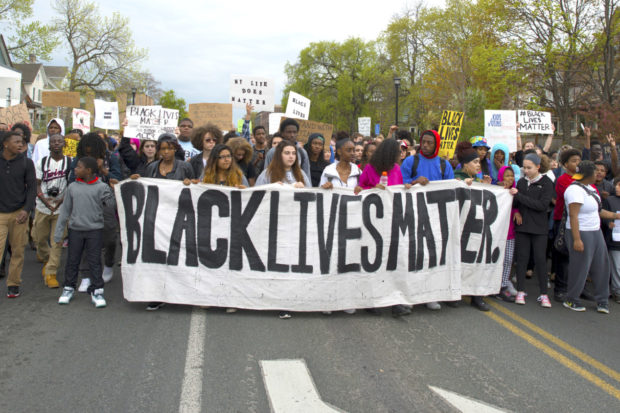
By Rumi Sherriff
Recently, substitute teacher David Roberts was banned from future employment at Clovis West High School for simply wearing a “Black Lives Matter” button while teaching. A key characteristic of schools should be to serve as forums for discourse and open thought, rather than refusing to acknowledge divisive issues. Conflicting opinions promote critical thinking, which in turn enables each side to see the fallacies and merits in their respective positions. There is no evidence to suggest that Clovis West would have prohibited a teacher from wearing a “Blue Lives Matter” button.
Clovis West’s apparent censorship on what opinions are acceptable raises the question whether it upholds these same qualities of openness and discussion for all students. Clovis West’s decision is indicative of Clovis Unified School District’s (CUSD) willingness to suppress the debate of controversial issues, which the school board defines as “[issues] arousing both support and opposition” among students and the greater community. By adhering to this policy, however, CUSD marginalizes students who hold similar views as Mr. Roberts by not allowing their opinions and concerns to be voiced within the school.
I recently read Mr. Roberts’ interview with the Fresno Bee, in which he detailed how students of color shook his hand and thanked him for wearing the Black Lives Matter button. It is evident some students share similar views as Mr. Roberts, yet the action taken against him has implications for student behavior as well. While students, not instructors, may be free to talk about such polarizing issues, the district’s policy draws a sharp line between acceptable and inappropriate speech in the minds of students. Regarding Black Lives Matter, CUSD’s approach differs strikingly from neighboring Fresno Unified School District (FUSD).
In August, Fresno Unified Superintendent Michael Hanson called on FUSD teachers to “not stay silent about the Black Lives Matter movement” but to stress that “Black Lives Matter” in order to emphasize the district’s commitment to its black students. As Hanson put it, “They matter a hell of a lot.” Hanson’s direct affirmation of the Black Lives Matter movement as important functioned as a point of connection between school and student, creating what education researchers Gail Jones and Tom Gerig call “community in school.”
Similarly, sociologist Eric Schaps’ study analyzing community in schools found that school-student connection tended to be significantly lower for low-income students and students of color. Schaps’ central claim hones in on the relationship between schools making students belong; if they fail to meet students’ needs for belonging, students are likely to become more alienated. It makes little sense, therefore, to punish a teacher for simply “showing solidarity with the kids.”
Some may explain the difference in attitudes between the two neighboring districts based on their disparate demographics. According to the California Department of Education’s database, black students in CUSD account for only 3 percent of the total district population. The percentage of black students is 3 times higher (9%) in FUSD than in CUSD and the City of Fresno has roughly 5 times as many black students (15%) as the City of Clovis. However, it is even more important that Clovis Unified acknowledges the concerns of its African-American and minority students since there are so few thus making it harder for students to feel the effects of such community in school.
Last year, I graduated from Fresno Unified’s Edison High School, which currently has a total minority enrollment of ninety-one percent [56% Hispanic, 19% African American, 15% Asian, 1% other, 1% bi-racial]. Teachers at Edison often addressed politically charged issues and contributed their own views in order to provide an opportunity for students to illustrate their perspectives. In contrast, CUSD’s discouragement of discussion on Black Lives Matter stunts debate and limits the understanding of some students’ perspectives by the school community. Given that Clovis Unified has such a small African-American population, such action sends the wrong message: one of exclusion rather than inclusion.
Such a message is precisely what minority students don’t need in the continued wake of the Presidential election. There are particular segments of the population that are feeling incredibly worried and nervous about their role and status; it is not an exaggeration to say that there is a pervading sense of apprehension in the country about the rights of minorities. Instead of reaching out and supporting discussion of these concerns, Clovis West, and by extension Clovis Unified, suppressed them. The banning of David Roberts simply indicates that Clovis Unified is further marginalizing students whose concerns already appear to be sidelined.
*****
Rumi Sherriff is a 2016 graduate of Edison High School, and currently is a freshman at Columbia University. He can be emailed at rumi.sherriff@columbia.edu.
